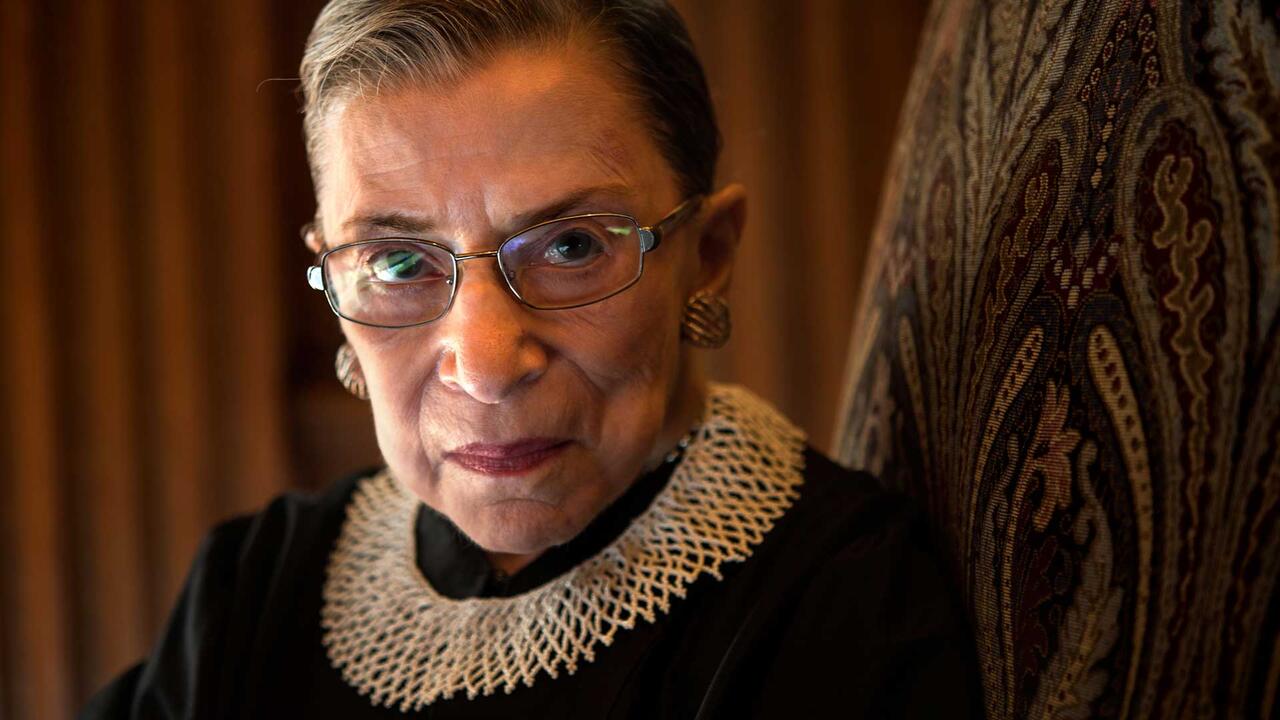
Professor Nancy Scherer on Ruth Bader Ginsburg’s Notorious Legacy and the Future of the Supreme Court
When the news broke on September 18 that Supreme Court Justice Ruth Bader Ginsburg had passed away, people across the nation took to social media to share their gratitude for her pioneering work, for women’s equality in particular, and to express how deeply she will be missed—both as a cultural icon and a member of the court. Nancy Scherer, an associate professor of political science at Wellesley who specializes in constitutional law and the United States justice systems, shared some of her memories of Ginsburg and her thoughts on her legacy.
What made Ruth Bader Ginsburg such a notable role model for women and girls across generations?
Nancy Scherer: She was the pioneer of the litigation strategy for the women’s rights movement in the 1970s. She started going to the Supreme Court as a lawyer fighting for equal rights, and she challenged the constitutionality of statutes that were based on gender stereotypes.
Her litigation strategy at the Supreme Court was very interesting, because she specifically chose male plaintiffs to fight for equal gender rights, not female plaintiffs. She firmly believed that if women pushed too fast they would alienate men. I remember thinking that this was a brilliant strategy. What she was basically doing was showing men that these gendered statutes can violate men’s rights as well as women’s rights.
In one of her landmark cases where she wrote the opinion for the majority, United States v. Virginia (1996), the Virginia Military Institute would not admit a female student. Virginia argued that it could not admit women without sacrificing and devaluing the military training for which the school is known. Justice Ginsburg made it clear that they could not rely on antiquated stereotypes (like women do not belong in the military) anymore. She ordered that VMI admit women at once or become a private university.
There is a lot of uncertainty surrounding the Supreme Court at this moment. Regarding the women’s issues Ginsburg was known for championing, what are some of the most significant concerns?
Scherer: Well, I think that it is on everyone’s mind. Democrats fear that Trump will name Ginsburg’s replacement, a person who will undoubtedly be very conservative, and then there would be six conservatives and three liberals on the court. They fear this new court would have the votes to overturn Roe v.Wade (1973).
“Her litigation strategy at the Supreme Court was very interesting, because she specifically chose male plaintiffs to fight for equal gender rights, not female plaintiffs.”
Nancy Scherer
There was another case—Burwell v. Hobby Lobby Stores, Inc. (2014)—that I thought was really important; here she wrote the dissent. This was a case where a company, a family business, did not want to cover the cost of birth control pills [for their female employees] because their religion was against birth control even though the Affordable Care Act requires all employers who provide insurance to cover birth control pills. It was a five to four decision, and the conservatives prevailed. Ginsburg questioned in her dissent, where is the stopping point? Suppose an employer’s sincerely held religious belief is offended by health coverage of vaccines, or paying the minimum wage, or providing women equal pay? She questioned why the store owners’ religion, in this case, is more important than the religion of the person who wants to use birth control. It is this kind of logic and thinking that will be sorely missed on the Court in the future.
Was the Supreme Court always so political, or ideological?
Scherer: There have been controversial political questions tackled by the Court since its inception. But, for almost two centuries, confirming a president’s pick for a seat on the Court was a simple process. Now, it's all about your polarized political ideology, i.e., how will you vote in cases, and not your credentials to be a justice.
You are currently working on a new book, The Diversity Dilemma, about representation and legitimacy on the Supreme Court and lower federal courts. Can you share some of your early findings?
Scherer: My book looks at how and why the president uses diversity on the bench to increase the legitimacy of the U.S. Supreme Court and the lower federal courts. If only white men were justices, a woman or a minority might think that those courts are unjust. I confirm that descriptive representation of formerly marginalized groups in our American political institutions does raise the courts’ legitimacy as more women and minorities get appointed.
Amid the positive remembrances of Ginsburg, a New York Times article raised the question, “Just whose feminism did she symbolize?” In this time of reflecting on our nation’s history, and the progress that has been made and still needs to be made for Black and brown people, what are your thoughts on her work and legacy for women of all backgrounds and ethnicities?
Scherer:I can think of two groups that may not be so enamored with Ginsburg’s philosophy. First, African American women who have long argued that the feminist movement of the 1970s was interested in improving the lives of white women. The second group would be feminists usually referred to as difference feminists. They strongly disagree with Ginsburg’s approach that women must not alienate men in their fight for justice.
What will you miss most about her?
Scherer: I remember when I was in law school, I knew about all the work she had done at the ACLU and I was mesmerized! I loved her and I wanted to be her—she was a real role model. Besides her brilliant opinions, I think what I will miss most are her collars. You know, she wore a lace collar every single day on the Supreme Court, and it was to show that a woman can be feminine and yet also a Supreme Court justice. That really meant a lot to me.



